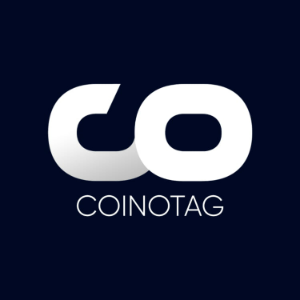Ethereum Foundation Tightens Treasury Controls as WisdomTree Fund Hits $300M
5 min read
Ethereum is undergoing a period of financial evolution on two major fronts. The Ethereum Foundation has announced a stricter, more transparent treasury management policy to extend its operating runway and improve accountability. At the same time, WisdomTree’s Ethereum-based money market fund, WTGXX, has quietly reached $300 million in assets under management, reflecting growing confidence in decentralized finance among institutional investors. Ethereum Foundation Tightens Treasury Strategy as Pivotal 18-Month Period Begins In a June 4 update , Ethereum Foundation director Hsiao-Wei Wang revealed that the organization’s cash runway is limited to just 2.5 years at current spending levels, prompting a major reassessment of how its vast treasury, primarily composed of Ether (ETH), is managed. “This policy reflects our conviction that 2025–26 are likely to be pivotal for Ethereum , warranting enhanced focus on critical deliverables,” Wang stated. The renewed focus underscores a turning point for the Foundation, which has faced community scrutiny for its recent, and somewhat opaque, ETH sales that raised questions about its financial stewardship and commitment to decentralization. Transparent Framework Tied to ETH Reserves The new policy will systematically tie the EF’s operational costs and liquidity needs to its ETH holdings, providing a buffer against market volatility and giving the Foundation flexibility in leaner market conditions. Key financial metrics, such as the percentage of ETH reserved for operations and years of projected runway, will be reassessed on a rolling basis, taking into account market dynamics and ongoing community feedback. This level of fiscal self-awareness is a strategic shift for the EF, which has historically maintained a “credible neutrality” posture that limited its active participation in DeFi or direct funding of ecosystem protocols. The move toward transparency comes after community backlash over surprise ETH sales in late 2024 and early 2025, which critics claimed eroded trust and created speculation around the Foundation’s intentions. To address these concerns and reinforce its transparency commitment, the Ethereum Foundation will begin publishing quarterly and annual reports detailing treasury holdings, investment activity, and any significant changes to its financial outlook. As of Oct. 31, 2024, the Ethereum Foundation’s treasury stood at $970.2 million, with $788.7 million held in crypto and $181.5 million in non-crypto assets. Notably, 81% of the crypto portion was denominated in ETH, a figure that has likely decreased slightly given ETH’s 1.8% price drop since then, according to CoinGecko data . With the updated policy, the EF is looking to extract sustainable yield from its treasury through deeper engagement with decentralized finance. In a departure from its historically passive stance, the Foundation is now actively deploying ETH into protocols that align with what it calls “Defipunk principles” — emphasizing permissionlessness, immutability, and rigorous security standards. In February 2025, EF earmarked 45,000 ETH (approximately $120 million) to be deployed across selected DeFi platforms. By late May, Aave founder Stani Kulechov confirmed that the Foundation had already supplied liquidity and borrowed $2 million in GHO stablecoins through Aave’s lending platform. Other supported protocols include Spark and Compound, signaling EF’s strategic diversification into multiple DeFi ecosystems. This increased participation comes after criticism from leading DeFi developers like Infinex founder Kain Warwick, who previously accused the Foundation of being “anti-DeFi” for its hands-off approach to funding protocol-level innovation. Internal Restructuring Amid ETH’s Lagging Performance The Foundation’s tightened fiscal approach coincides with internal restructuring. On June 2, EF confirmed that it had laid off several members of its internal development team, although it declined to specify how many roles were impacted. Despite Ethereum’s central role in the broader blockchain ecosystem, ETH has significantly underperformed relative to peers during the current bull market. While Bitcoin (BTC) and Solana (SOL) recently reached new all-time highs, ETH remains 46.5% below its November 2021 peak of $4,878. This has only intensified calls for the Foundation to accelerate innovation, improve communication, and better allocate its resources to high-impact projects. WisdomTree’s Ethereum-Based Digital Fund Surges to $300M AUM, Signaling DeFi’s Growing Institutional Appeal As the EF makes internal adjustments, WTGXX has reached $300M in AUM. Launched as a blockchain-native alternative to conventional savings and government money market accounts, WTGXX stands out for blending time-tested investment strategies with the benefits of decentralized infrastructure. The fund is fully backed by US government securities and utilizes the Ethereum blockchain for transparency, security, and accessibility. Just months ago, WTGXX was a relatively unknown digital fund. Today, with $300 million under its belt, it represents one of the most successful examples of real-world asset tokenization on Ethereum to date. The pace of its AUM growth reflects rising investor confidence not just in the fund itself, but in the viability of decentralized asset management as a whole. The fund’s appeal lies in its structure: decentralized and more inclusive than traditional savings options, yet backed by the same government instruments that form the backbone of many conventional portfolios. As traditional yields remain under pressure, many investors are seeking out blockchain-based instruments like WTGXX for their combination of reliability and potential for higher returns. WTGXX operates entirely on Ethereum, the world’s leading smart contract platform. By leveraging Ethereum’s decentralized network, the fund offers transparency in asset tracking, immutability in record-keeping, and programmability for compliance and automation. Importantly, the fund’s holdings—US Treasury securities—are tokenized and secured on-chain. This innovation allows near-instant settlement, real-time auditing, and a level of accessibility impossible in legacy financial systems. WisdomTree’s success could inspire a wave of similar products from both traditional asset managers and crypto-native firms, sparking a new era of tokenized investments that are compliant, secure, and accessible to a broader base of investors. Decentralized Yet Compliant One of WTGXX’s most notable features is that it achieves decentralization without sacrificing regulatory compliance. This balance is crucial in today’s investment landscape, where government scrutiny of crypto products remains high. By anchoring the fund in US government securities and delivering it via Ethereum smart contracts, WisdomTree has created a hybrid model that satisfies institutional-grade requirements while offering DeFi’s inherent advantages. While traditional savings accounts still dominate the market, their returns are often lower and accessibility more limited—particularly in developing countries or among underbanked populations. In contrast, WTGXX opens the door for anyone with an Ethereum wallet to access a stable, yield-generating fund that is both transparent and portable. The meteoric rise of WTGXX’s AUM may signal a broader shift in investor sentiment. As major financial players pour money into blockchain-based funds, retail investors are increasingly taking notice—and action. What was once a playground for tech-savvy early adopters is quickly becoming a serious consideration for more traditional investors. This democratization of access to high-quality financial products, made possible through blockchain technology, may mark the start of a long-term trend. More financial companies are expected to launch tokenized offerings on Ethereum or similar networks in the coming years.

Source: Coinpaper



